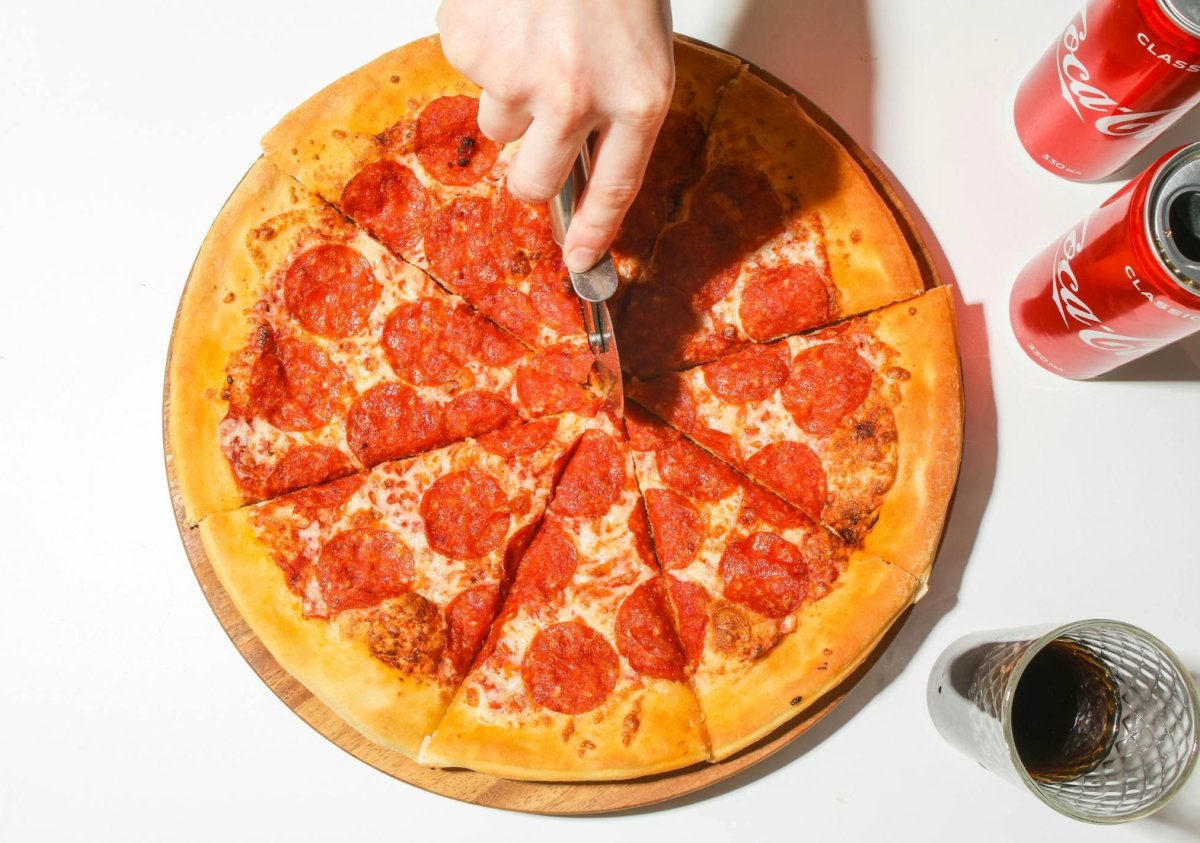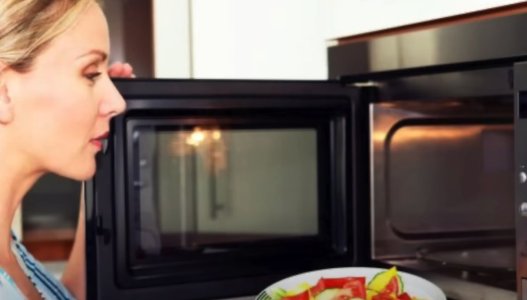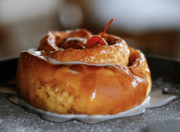
There's something almost rebellious about eating cold pizza for breakfast. Maybe it reminds you of college days, late nights, or those moments when you discovered that sometimes the "wrong" way to eat something turns out to be absolutely right. If you've ever found yourself sneaking a slice straight from the fridge and thinking it tastes better than it did hot, you're not imagining things—and you're definitely not alone.
You're part of a surprising majority! In Pizza Hut's second annual Pizza Trends Report, 57% of Americans prefer their leftover pizza cold.
Science has some fascinating explanations for why your taste buds might be onto something special.
The hot versus cold pizza debate cuts across all generations.
It might surprise you to know how many people are in the cold pizza camp.
When a social media user renewed the debate in 2023 by asserting that cold pizza is the better option, 160 users shared their opinions.
Responses ranged from "it depends on the pizza" to "absolute insanity."
The great pizza divide: a generational perspective
If you grew up when pizza was primarily homemade or from local pizzerias rather than delivery chains, you might have different associations with leftover pizza.
The thick-crust, heavily sauced pizzas of decades past often needed reheating.
Today's thinner, more balanced pizzas actually hold up remarkably well cold.
The beauty of cold pizza lies partly in its convenience—no reheating required, no hot cheese burns, and no waiting.
For those managing smaller households or living alone, cold pizza offers a quick, satisfying meal without the fuss of warming up the oven or dealing with uneven microwave heating.
The fascinating science behind cold pizza's appeal
What's actually happening when pizza transforms in your refrigerator overnight? The changes are more complex and interesting than you might expect.
Chilling foods mellows the flavors, particularly those that are bitter or sweet. The taste receptors for saltiness are stronger in cold temperatures.
This mutes the sweetness of the tomato sauce, causing the pizza to taste saltier.
Other, more delicate flavors, such as the herbs in the sauce, can also come through stronger.
When pizza is piping hot, the strongest sensations are temperature and dominant flavors like cheese and sauce.
When served cold, seasonings such as oregano, basil, and garlic become more noticeable, rather than being overshadowed by heat and stronger flavors.
"Pizza stays good when cold because it retains its structural integrity"
When pizza cools, the oils in the cheese and toppings begin to solidify.
This not only makes the slice feel more stable and less greasy, but those solidified oils also trap and blend the flavors, allowing them to mingle as the pizza rests.
Over time, aromatic ingredients soften and balance with the rest of the dish, creating a smoother, more unified taste.
Since the fats stay firm at cooler temperatures, the pizza can be enjoyed without the oily mess that often comes with a hot slice.
Also read: This local pizza shop just made the global top 100—here’s the inspiring woman behind it
Beyond pizza: other foods that improve with time
It's not just pizza that benefits from a night in the fridge. Many dishes taste better the next day as flavors continue to develop.
This is particularly true for dishes many of us grew up making and still enjoy today.
Meat dishes, such as stews, curries, and spaghetti bolognese, contain collagen.
This collagen starts breaking down when meat reaches 160 degrees Fahrenheit, absorbing other flavors in the dish.
In the refrigerator, this collagen forms a rich, flavorful base that melts when reheated, creating an even more satisfying meal.
Your grandmother's pot roast, that big batch of chili, or the beef stew that simmered all afternoon—they all get better because the proteins, fats, and seasonings have more time to mingle and create complex, layered flavors.
Did you know?
Did you know? Baked goods can also benefit from aging. Dense cakes like pound cake or chocolate cake often taste better after being wrapped and stored for a few days, as oils distribute flavors throughout the cake more evenly.
Smart reheating strategies for other leftovers
While pizza shines when served cold, most other leftovers benefit from proper reheating techniques.
If you're using the microwave, the secret lies in adjusting the power level.
1. Never use 100% power for everything.
2. Cook foods with high moisture content at 90% or 100% power.
3. Foods like meats, pastas, or others liable to get tough should be cooked at 50% to 60% power.
4. Lower power means a longer cooking time, but yields a far more palatable result.
5. Adding extra moisture will also help keep reheated foods moist.
6. Place a damp paper towel over your container or add a splash of water or milk.
7. If you're reheating something with a cream-based sauce, such as mac and cheese, add a bit more milk and stir repeatedly during cooking to prevent the sauce from separating.
8. For crispy items like pizza that you do want to reheat, rewarm it in the oven or air fryer instead. This restores the crispy crust texture that makes hot pizza special too.

Microwave Reheating Power Guide
Soups, stews, casseroles: 90-100% power
Meat dishes, pasta: 50-60% power
Rice dishes: 70-80% power
Always add a splash of liquid and cover loosely
Stir halfway through heating time
Also read: The right way to reheat chicken and keep your leftovers safe
Making leftovers work for smaller households
One advantage many of us discover in our later years is becoming more strategic about food preparation and storage.
Leftovers aren't just about convenience—they're about making your food budget stretch further and reducing waste.
Consider freezing portions immediately after cooking rather than keeping everything in the refrigerator.
Soups, stews, and casseroles freeze beautifully in individual portions.
Even pizza slices can be wrapped in foil and frozen for up to three months.
Transform leftovers into entirely new meals. Last night's roast chicken becomes today's chicken salad.
Yesterday's vegetables find new life in a frittata or soup. That extra tomato sauce becomes the base for a quick minestrone.
Food safety considerations for seniors
Leftovers will last between three and five days in the fridge. However, as we age, food safety becomes even more important since our immune systems may not bounce back as quickly from foodborne illnesses.
Always store leftovers in shallow containers so they cool quickly and evenly.
Label containers with dates—it's easy to forget when something went into the refrigerator. You also should not leave any prepared foods out for more than two hours to avoid bacterial growth.
If leftovers have an unusual smell, texture or taste, it's best to discard them. Visible mold or discoloration is also a sign that food has gone off.
When you're unsure, it's best to be safe and toss leftovers that might be bad.
Maximizing Your Leftovers Safely
- Store in shallow containers for quick cooling
- Label everything with dates
- Keep refrigerator at 40°F or below
- Use the 'first in, first out' principle
- Trust your senses—when in doubt, throw it out
- Reheat thoroughly to 165°F internal temperature
Also read: Stop microwaving these 5 foods immediately–expert warnings you can’t ignore
The bigger picture: embracing food wisdom
There's something deeply satisfying about discovering that your instincts about food have been right all along.
If you've always preferred certain foods at room temperature or enjoyed leftovers in ways others might consider unconventional, you're part of a tradition of food wisdom that values taste over rigid rules.
The cold pizza phenomenon reminds us that our relationship with food doesn't have to be constrained by how we think things "should" be eaten.
Sometimes the most enjoyable meal is the simplest one—a slice of pizza eaten standing in the kitchen, no fuss, no reheating, just pure satisfaction.
Whether you're team hot pizza or team cold pizza, the science shows us that both preferences have merit.
Food continues to evolve even after cooking, and understanding these changes can help us appreciate our meals more fully and waste less food in the process.
What This Means For You
At the end of the day, the cold pizza debate comes down to personal taste and tradition. Leftovers remind us that food often gets better with time, offering new flavors and second chances. Whether you prefer your pizza hot or cold, the joy is in savoring it your own way.
What's your take on the cold pizza debate? Do you have other foods that you prefer as leftovers? Share your unconventional food preferences and leftover strategies in the comments below—you might just convince someone to try something new.
Read next:
- Pizza Hut just dropped five new limited-time pizza—here’s the full lineup
- 15 cheese pizza day deals that will make your next slice even better
- Pizza Hut is changing—here’s what’s replacing the red booths and salad bars you remember
Original Article
https://www.hazard-herald.com/news/...cle_8a5363e7-731c-5f5e-981e-5714ef2dd758.html
Does Cold Pizza Actually Taste Better? The Science of Leftovers | Entertainment | wktv.com
Cited text: In Pizza Hut
Excerpt: In Pizza Hut
https://www.wktv.com/news/entertain...cle_f1f50de8-8b23-5411-a6de-39e6c8f0c031.html
Does cold pizza actually taste better? The science of leftovers
Cited text: In Pizza Hut
Excerpt: In Pizza Hut
https://www.washingtontimes.com/new...ds-improve-leftovers-skip-great-pizza-debate/
Does cold pizza actually taste better? The science of leftovers
Cited text: In Pizza Hut’s second annual Pizza Trends Report, 57% of Americans prefer their leftover pizza cold, and science suggests there might be something to ...
Excerpt: In Pizza Hut
https://fooddrinklife.com/science-of-leftovers/
Does Cold Pizza Actually Taste Better? The Science of Leftovers | Entertainment | wktv.com
Cited text: When a Reddit user renewed the debate in 2023 by asserting that cold pizza is the better option, 160 users shared their opinions, ranging from
Excerpt: When a Reddit user renewed the debate in 2023 by asserting that cold pizza is the better option, 160 users shared their opinions, ranging from
https://www.wktv.com/news/entertain...cle_f1f50de8-8b23-5411-a6de-39e6c8f0c031.html
Does cold pizza actually taste better? The science of leftovers
Cited text: When a Reddit user renewed the debate in 2023 by asserting that cold pizza is the better option, 160 users shared their opinions, ranging from “it dep...
Excerpt: When a Reddit user renewed the debate in 2023 by asserting that cold pizza is the better option, 160 users shared their opinions, ranging from
https://www.washingtontimes.com/new...ds-improve-leftovers-skip-great-pizza-debate/
Does cold pizza actually taste better? The science of leftovers
Cited text: When a Reddit user renewed the debate in 2023 by asserting that cold pizza is the better option, 160 users shared their opinions, ranging from “it dep...
Excerpt: When a Reddit user renewed the debate in 2023 by asserting that cold pizza is the better option, 160 users shared their opinions, ranging from
https://fooddrinklife.com/science-of-leftovers/
Does Cold Pizza Actually Taste Better? The Science of Leftovers | Entertainment | wktv.com
Cited text: Chilling foods mellows the flavors, particularly those that are bitter or sweet.
Excerpt: Chilling foods mellows the flavors, particularly those that are bitter or sweet.
https://www.wktv.com/news/entertain...cle_f1f50de8-8b23-5411-a6de-39e6c8f0c031.html
Does cold pizza actually taste better? The science of leftovers
Cited text: Chilling foods mellows the flavors, particularly those that are bitter or sweet.
Excerpt: Chilling foods mellows the flavors, particularly those that are bitter or sweet.
https://www.washingtontimes.com/new...ds-improve-leftovers-skip-great-pizza-debate/
Does cold pizza actually taste better? The science of leftovers
Cited text: Chilling foods mellows the flavors, particularly those that are bitter or sweet.
Excerpt: Chilling foods mellows the flavors, particularly those that are bitter or sweet.
https://fooddrinklife.com/science-of-leftovers/
Does Cold Pizza Actually Taste Better? The Science of Leftovers | Entertainment | wktv.com
Cited text: Meanwhile, the taste receptors for saltiness are stronger in cold temperatures.
Excerpt: Meanwhile, the taste receptors for saltiness are stronger in cold temperatures.
https://www.wktv.com/news/entertain...cle_f1f50de8-8b23-5411-a6de-39e6c8f0c031.html
Does cold pizza actually taste better? The science of leftovers
Cited text: Meanwhile, the taste receptors for saltiness are stronger in cold temperatures.
Excerpt: Meanwhile, the taste receptors for saltiness are stronger in cold temperatures.
https://www.washingtontimes.com/new...ds-improve-leftovers-skip-great-pizza-debate/
Does cold pizza actually taste better? The science of leftovers
Cited text: Meanwhile, the taste receptors for saltiness are stronger in cold temperatures.
Excerpt: Meanwhile, the taste receptors for saltiness are stronger in cold temperatures.
https://fooddrinklife.com/science-of-leftovers/
Does Cold Pizza Actually Taste Better? The Science of Leftovers | Entertainment | wktv.com
Cited text: This mutes the sweetness of the tomato sauce, causing the pizza to taste saltier.
Excerpt: This mutes the sweetness of the tomato sauce, causing the pizza to taste saltier.
https://www.wktv.com/news/entertain...cle_f1f50de8-8b23-5411-a6de-39e6c8f0c031.html
Does cold pizza actually taste better? The science of leftovers
Cited text: This mutes the sweetness of the tomato sauce, causing the pizza to taste saltier.
Excerpt: This mutes the sweetness of the tomato sauce, causing the pizza to taste saltier.
https://www.washingtontimes.com/new...ds-improve-leftovers-skip-great-pizza-debate/
Does cold pizza actually taste better? The science of leftovers
Cited text: This mutes the sweetness of the tomato sauce, causing the pizza to taste saltier.
Excerpt: This mutes the sweetness of the tomato sauce, causing the pizza to taste saltier.
https://fooddrinklife.com/science-of-leftovers/
Does Cold Pizza Actually Taste Better? The Science of Leftovers | Entertainment | wktv.com
Cited text: Other, more delicate flavors, such as the herbs in the sauce, can also come through stronger.
Excerpt: Other, more delicate flavors, such as the herbs in the sauce, can also come through stronger.
https://www.wktv.com/news/entertain...cle_f1f50de8-8b23-5411-a6de-39e6c8f0c031.html
Does cold pizza actually taste better? The science of leftovers
Cited text: Other, more delicate flavors, such as the herbs in the sauce, can also come through stronger.
Excerpt: Other, more delicate flavors, such as the herbs in the sauce, can also come through stronger.
https://www.washingtontimes.com/new...ds-improve-leftovers-skip-great-pizza-debate/
Does cold pizza actually taste better? The science of leftovers
Cited text: Other, more delicate flavors, such as the herbs in the sauce, can also come through stronger.
Excerpt: Other, more delicate flavors, such as the herbs in the sauce, can also come through stronger.
https://fooddrinklife.com/science-of-leftovers/
Does Cold Pizza Actually Taste Better? The Science of Leftovers | Entertainment | wktv.com
Cited text: Oils in the pizza solidify when cold.
Excerpt: Oils in the pizza solidify when cold.
https://www.wktv.com/news/entertain...cle_f1f50de8-8b23-5411-a6de-39e6c8f0c031.html
Does cold pizza actually taste better? The science of leftovers
Cited text: Oils in the pizza solidify when cold.
Excerpt: Oils in the pizza solidify when cold.
https://www.washingtontimes.com/new...ds-improve-leftovers-skip-great-pizza-debate/
Does cold pizza actually taste better? The science of leftovers
Cited text: Oils in the pizza solidify when cold.
Excerpt: Oils in the pizza solidify when cold.
https://fooddrinklife.com/science-of-leftovers/
Does Cold Pizza Actually Taste Better? The Science of Leftovers | Entertainment | wktv.com
Cited text: This can lend the pizza extra stability and reduce the greasiness of a warm pizza.
Excerpt: This can lend the pizza extra stability and reduce the greasiness of a warm pizza.
https://www.wktv.com/news/entertain...cle_f1f50de8-8b23-5411-a6de-39e6c8f0c031.html
Does cold pizza actually taste better? The science of leftovers
Cited text: This can lend the pizza extra stability and reduce the greasiness of a warm pizza.
Excerpt: This can lend the pizza extra stability and reduce the greasiness of a warm pizza.
https://www.washingtontimes.com/new...ds-improve-leftovers-skip-great-pizza-debate/
Does cold pizza actually taste better? The science of leftovers
Cited text: This can lend the pizza extra stability and reduce the greasiness of a warm pizza.
Excerpt: This can lend the pizza extra stability and reduce the greasiness of a warm pizza.
https://fooddrinklife.com/science-of-leftovers/
Does Cold Pizza Actually Taste Better? The Science of Leftovers | Entertainment | wktv.com
Cited text: Those solidified oils also hold all of the flavors, absorbing and melding them as the pizza cools.
Excerpt: Those solidified oils also hold all of the flavors, absorbing and melding them as the pizza cools.
https://www.wktv.com/news/entertain...cle_f1f50de8-8b23-5411-a6de-39e6c8f0c031.html
Does cold pizza actually taste better? The science of leftovers
Cited text: Those solidified oils also hold all of the flavors, absorbing and melding them as the pizza cools.
Excerpt: Those solidified oils also hold all of the flavors, absorbing and melding them as the pizza cools.
https://www.washingtontimes.com/new...ds-improve-leftovers-skip-great-pizza-debate/
Does cold pizza actually taste better? The science of leftovers
Cited text: Those solidified oils also hold all of the flavors, absorbing and melding them as the pizza cools.
Excerpt: Those solidified oils also hold all of the flavors, absorbing and melding them as the pizza cools.
https://fooddrinklife.com/science-of-leftovers/
The Science Behind Why Pizza Tastes Better Cold—Chowhound
Cited text: This is because, with time, aromatic ingredients mellow out and combine with other flavors in your dish, producing a much more cohesive flavor.
Excerpt: With time, aromatic ingredients mellow out and combine with other flavors in your dish, producing a much more cohesive flavor.
https://www.chowhound.com/1504231/why-cold-pizza-tastes-good/
The Science Behind Why Pizza Tastes Better Cold—Chowhound
Cited text: Since cold temperatures help keep the fats in pizza solid, you don
Excerpt: Since cold temperatures help keep the fats in pizza solid, you don
https://www.chowhound.com/1504231/why-cold-pizza-tastes-good/
Does Cold Pizza Actually Taste Better? The Science of Leftovers | Entertainment | wktv.com
Cited text: It
Excerpt: It
https://www.wktv.com/news/entertain...cle_f1f50de8-8b23-5411-a6de-39e6c8f0c031.html
Does cold pizza actually taste better? The science of leftovers
Cited text: ... It’s not just pizza that benefits from a night in the fridge.
Excerpt: It
https://www.washingtontimes.com/new...ds-improve-leftovers-skip-great-pizza-debate/
Does cold pizza actually taste better? The science of leftovers
Cited text: It’s not just pizza that benefits from a night in the fridge.
Excerpt: It
https://fooddrinklife.com/science-of-leftovers/
Does Cold Pizza Actually Taste Better? The Science of Leftovers | Entertainment | wktv.com
Cited text: Many dishes taste better the next day as flavors continue to develop.
Excerpt: Many dishes taste better the next day as flavors continue to develop.
https://www.wktv.com/news/entertain...cle_f1f50de8-8b23-5411-a6de-39e6c8f0c031.html
Does cold pizza actually taste better? The science of leftovers
Cited text: Many dishes taste better the next day as flavors continue to develop.
Excerpt: Many dishes taste better the next day as flavors continue to develop.
https://www.washingtontimes.com/new...ds-improve-leftovers-skip-great-pizza-debate/
Does cold pizza actually taste better? The science of leftovers
Cited text: Many dishes taste better the next day as flavors continue to develop.
Excerpt: Many dishes taste better the next day as flavors continue to develop.
https://fooddrinklife.com/science-of-leftovers/
Does Cold Pizza Actually Taste Better? The Science of Leftovers | Entertainment | wktv.com
Cited text: Meat dishes, such as stews, curries and spaghetti bolognese, contain collagen.
Excerpt: Meat dishes, such as stews, curries and spaghetti bolognese, contain collagen.
https://www.wktv.com/news/entertain...cle_f1f50de8-8b23-5411-a6de-39e6c8f0c031.html
Does cold pizza actually taste better? The science of leftovers
Cited text: Meat dishes, such as stews, curries and spaghetti bolognese, contain collagen.
Excerpt: Meat dishes, such as stews, curries and spaghetti bolognese, contain collagen.
https://www.washingtontimes.com/new...ds-improve-leftovers-skip-great-pizza-debate/
Does cold pizza actually taste better? The science of leftovers
Cited text: Meat dishes, such as stews, curries and spaghetti bolognese, contain collagen.
Excerpt: Meat dishes, such as stews, curries and spaghetti bolognese, contain collagen.
https://fooddrinklife.com/science-of-leftovers/
Does Cold Pizza Actually Taste Better? The Science of Leftovers | Entertainment | wktv.com
Cited text: This collagen starts breaking down when meat reaches 160 degrees Fahrenheit, absorbing other flavors in the dish.
Excerpt: This collagen starts breaking down when meat reaches 160 degrees Fahrenheit, absorbing other flavors in the dish.
https://www.wktv.com/news/entertain...cle_f1f50de8-8b23-5411-a6de-39e6c8f0c031.html
Does cold pizza actually taste better? The science of leftovers
Cited text: This collagen starts breaking down when meat reaches 160 degrees Fahrenheit, absorbing other flavors in the dish.
Excerpt: This collagen starts breaking down when meat reaches 160 degrees Fahrenheit, absorbing other flavors in the dish.
https://www.washingtontimes.com/new...ds-improve-leftovers-skip-great-pizza-debate/
Does cold pizza actually taste better? The science of leftovers
Cited text: This collagen starts breaking down when meat reaches 160 degrees Fahrenheit, absorbing other flavors in the dish.
Excerpt: This collagen starts breaking down when meat reaches 160 degrees Fahrenheit, absorbing other flavors in the dish.
https://fooddrinklife.com/science-of-leftovers/
Does cold pizza actually taste better? The science of leftovers | Home and Garden | stgeorgeutah.com
Cited text: Instead, cook foods with high moisture content at 90% or 100% power.
Excerpt: Cook foods with high moisture content at 90% or 100% power.
https://www.stgeorgeutah.com/life/h...cle_77fdfcfd-fcee-47c5-825b-1ccb2c11e182.html
Does cold pizza actually taste better? The science of leftovers | Home and Garden | stgeorgeutah.com
Cited text: Foods like meats, pastas or others liable to get tough should be cooked at 50% to 60% power.
Excerpt: Foods like meats, pastas or others liable to get tough should be cooked at 50% to 60% power.
https://www.stgeorgeutah.com/life/h...cle_77fdfcfd-fcee-47c5-825b-1ccb2c11e182.html
Does cold pizza actually taste better? The science of leftovers | Home and Garden | stgeorgeutah.com
Cited text: Lower power means a longer cooking time, but yields a far more palatable result.
Excerpt: Lower power means a longer cooking time, but yields a far more palatable result.
https://www.stgeorgeutah.com/life/h...cle_77fdfcfd-fcee-47c5-825b-1ccb2c11e182.html
Does cold pizza actually taste better? The science of leftovers | Home and Garden | stgeorgeutah.com
Cited text: Adding extra moisture will also help keep reheated foods moist. Place a damp paper towel over your container or add a splash of water or milk.
Excerpt: Adding extra moisture will also help keep reheated foods moist. Place a damp paper towel over your container or add a splash of water or milk.
https://www.stgeorgeutah.com/life/h...cle_77fdfcfd-fcee-47c5-825b-1ccb2c11e182.html
Does cold pizza actually taste better? The science of leftovers | Home and Garden | stgeorgeutah.com
Cited text: If you
Excerpt: If you
https://www.stgeorgeutah.com/life/h...cle_77fdfcfd-fcee-47c5-825b-1ccb2c11e182.html
Does cold pizza actually taste better? The science of leftovers | Home and Garden | stgeorgeutah.com
Cited text: If your reheated food is soggy, such as a slice of pizza, rewarm it in the oven or air fryer instead.
Excerpt: rewarm it in the oven or air fryer instead.
https://www.stgeorgeutah.com/life/h...cle_77fdfcfd-fcee-47c5-825b-1ccb2c11e182.html
Penn State Food Safety Blog: Is Cold Pizza Better Than Hot Pizza?
Cited text: Leftovers will last between three and five days in the fridge.
Excerpt: Leftovers will last between three and five days in the fridge.
https://pennstatefoodsafety.blogspot.com/2025/09/is-cold-pizza-better-than-hot-pizza.html
Penn State Food Safety Blog: Is Cold Pizza Better Than Hot Pizza?
Cited text: You also should not leave any prepared foods out for more than two hours to avoid bacterial growth.
Excerpt: You also should not leave any prepared foods out for more than two hours to avoid bacterial growth.
https://pennstatefoodsafety.blogspot.com/2025/09/is-cold-pizza-better-than-hot-pizza.html
Penn State Food Safety Blog: Is Cold Pizza Better Than Hot Pizza?
Cited text: If leftovers have an unusual smell, texture or taste, it’s best to discard them. Visible mold or discoloration is also a sign that food has gone off. ...
Excerpt: If leftovers have an unusual smell, texture or taste, it
https://pennstatefoodsafety.blogspot.com/2025/09/is-cold-pizza-better-than-hot-pizza.html






